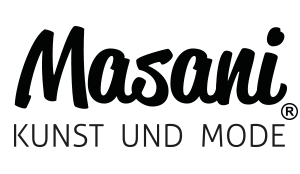DAM Software 360: Navigating the Pros and Cons Landscape
The Landscape of Digital Asset Management
In at present fast-paced digital period, managing and organizing digital belongings effectively has become an important side of enterprise operations. Digital Asset Management (DAM) software program plays a pivotal role in streamlining this process. Explore the professionals and cons of using asset management software comparison for your organization’s needs.
Pros of Digital Asset Management Software
1. Streamlined Workflow
One of the primary advantages of DAM software is its ability to streamline workflows. With centralized storage and simple retrieval of digital assets, groups can collaborate seamlessly, reducing the time spent trying to find recordsdata and enhancing overall productiveness.
2. Enhanced Security Measures
DAM software program typically comes outfitted with strong safety features, making certain the safety of delicate digital property. Role-based access control, encryption, and permission settings contribute to a secure surroundings, safeguarding valuable firm belongings from unauthorized entry or potential threats.
3. Improved Version Control
Keeping observe of asset variations is simplified with DAM software program. Users can simply handle revisions, monitor modifications, and collaborate on the newest variations of digital property, preventing confusion and potential errors within the workflow.
4. Efficient Metadata Management
DAM systems permit for the efficient organization and retrieval of property through metadata. Properly tagged and categorized property allow users to rapidly find the information they need, fostering a more organized and productive digital asset management technique.
5. Scalability and Customization
Many DAM options provide scalability to accommodate the rising needs of businesses. Additionally, customization features allow organizations to tailor the software program to their specific necessities, making certain a more personalized and effective digital asset administration course of.
Cons of Digital Asset Management Software
1. Initial Implementation Costs
Implementing DAM software may contain important upfront prices, together with software program licenses, training, and system integration. Organizations must rigorously weigh these bills in opposition to the long-term benefits the software supplies.
2. Learning Curve for Users
Introducing new software can be met with resistance as customers adapt to a unique system. The learning curve associated with DAM software may quickly impact productivity until customers turn into acquainted with the model new tools and processes.
3. Maintenance and Upkeep
Ongoing upkeep and updates are important for the smooth functioning of DAM software. Organizations should allocate assets for regular upkeep to handle any points, guarantee compatibility with different techniques, and take advantage of new features or security patches.
4. Integration Challenges
Integrating DAM software with existing methods and workflows can pose challenges. Compatibility issues could come up, requiring careful planning and doubtlessly additional improvement to make sure seamless integration and minimal disruption to day by day operations.
5. Overwhelming Features for Small Businesses
While DAM software program offers a range of options, smaller businesses with simpler asset management needs could discover the array of functionalities overwhelming. It’s crucial to evaluate whether or not the software aligns with the precise necessities and scale of the organization.
Conclusion
Digital Asset Management software presents a powerful answer for companies in search of environment friendly group and utilization of their digital belongings. While the benefits corresponding to streamlined workflows, enhanced security, and improved model control are evident, organizations should fastidiously consider the associated costs, learning curve, and integration challenges. Finding the best stability and selecting a DAM solution that aligns with the distinctive wants of the group is vital to maximizing the advantages and overcoming potential drawbacks.
Frequently Asked Questions
1. How do I select the best DAM software program for my business?
The selection course of includes assessing your group’s particular needs, contemplating scalability, customization options, and integration capabilities. It’s advisable to trial completely different solutions and gather suggestions from key stakeholders.
2. Can DAM software be used by small businesses?
Yes, but it’s important to evaluate the size of your digital asset management wants. Smaller companies might opt for extra easy options to keep away from the complexity of options designed for larger enterprises.
3. How can DAM software improve collaboration inside a team?
DAM software centralizes digital assets, making them easily accessible to team members. This facilitates collaborative efforts, reduces redundancy, and ensures everyone seems to be working with probably the most up-to-date versions of property.
4. What security measures should I search for in DAM software?
Look for features such as role-based entry control, encryption, and permission settings. These parts contribute to a safe setting, protecting digital assets from unauthorized entry and potential safety threats.
5. Is DAM software program a one-size-fits-all solution?
No, organizations range in measurement, construction, and digital asset management wants. It’s crucial to choose DAM software program that can be customized to align with the distinctive requirements of your corporation.



